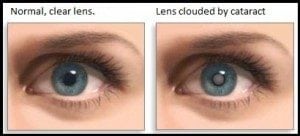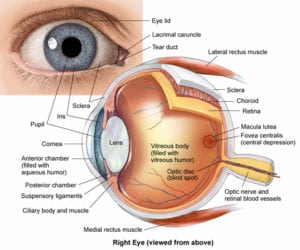What’s the difference between LenSx and LASIK?
LASIK is a laser procedure used to treat nearsightedness, farsightedness and astigmatism. LASIK cannot correct presbyopia, the age-related loss of close-up focusing power.
In the procedure, a laser is used to reshape the cornea — the clear, round dome at the front of the eye– to improve the way the eye focuses light rays onto the retina at the back of the eye.
For people who are nearsighted, LASIK is used to flatten a cornea that is too steep. Farsighted people will have LASIK to achieve a steeper cornea. LASIK can also correct astigmatism by shaping an irregular cornea into a more normal shape.
More than 90 percent of people who have LASIK perform most of their everyday tasks without glasses or contact lenses. Your doctor will consider your vision needs for work and leisure activities to determine if LASIK is right for you.
Some patients may need a second enhancement surgery or might need to wear glasses for certain activities, such as reading or driving at night.
LenSx is a bladeless surgical laser used for cataract and premium lens procedures. A cataract is a clouding of the lens inside the eye that occurs naturally with age. The LenSx laser can be used rather than a hand-held blade to make incisions as well as opening the front of the cataract and softening it prior to its removal.
 The LenSx can also be used to correct astigmatism during premium lens procedures and cataract surgery. Astigmatism is an irregularity in the shape of the cornea that causes both near and distance objects appear blurry or distorted without correction by glasses or contact lenses. The laser is used to make incisions into the cornea which are placed at the exact location of the astigmatism.
The LenSx can also be used to correct astigmatism during premium lens procedures and cataract surgery. Astigmatism is an irregularity in the shape of the cornea that causes both near and distance objects appear blurry or distorted without correction by glasses or contact lenses. The laser is used to make incisions into the cornea which are placed at the exact location of the astigmatism.
The benefits of laser surgery include:
- The laser provides an extremely detailed 3-D image of the eye. Since each eye is different with regards to its structures, the surgeon can use the measurements the laser provides to plan your surgery much more precisely.
- The laser automates challenging steps, allowing precise, repeatable incisions through an image-guided system.
- The laser enables better centering of the intraocular lens which is a significant factor in determining final visual outcomes.
- The laser procedure causes less inflammation to the eye, so patients heal more quickly and experience improved visual acuity more quickly than with traditional cataract surgery.
- The laser enables the physician to simultaneously correct certain amounts of regular astigmatism to reduce your need for glasses.
Cataract surgery is one of the most commonly performed surgical procedures in the United States and has been shown to significantly improve vision and quality of life for patients who undergo the procedure.







 ANNOUNCING UPDATES TO OUR COVID-19 SAFETY PROTOCOLS
ANNOUNCING UPDATES TO OUR COVID-19 SAFETY PROTOCOLS